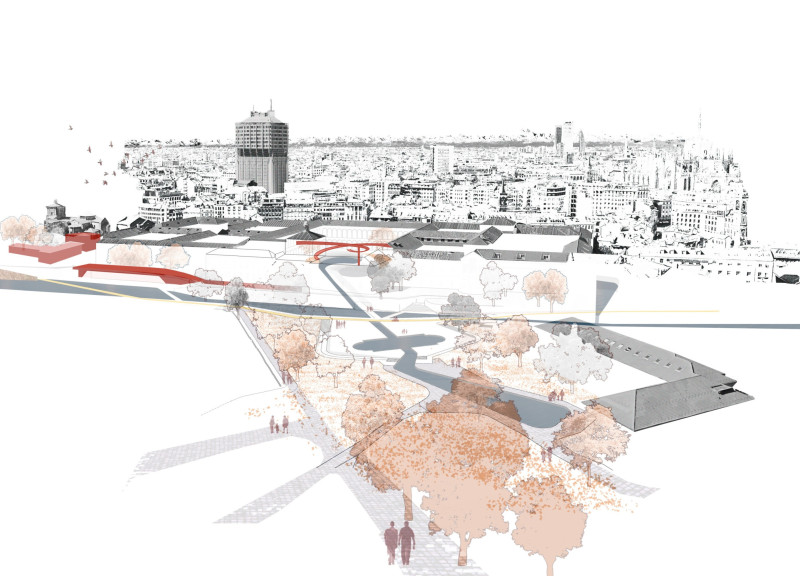5 key facts about this project
The design for Milan's Navigli area aims to bring together the historical elements of the city with modern urban life. It is set against the backdrop of Milan’s canals, rethinking these waterways as vital parts of the urban landscape. The overall design focuses on creating a unified experience that respects the city's rich history while providing new, accessible spaces for community interaction and engagement.
Connectivity and Mobility
The approach emphasizes connections through the canal system, promoting better accessibility throughout the area. New pedestrian pathways and cycling routes are integrated to enhance movement between the city center and its parks. These routes are designed to intersect with existing public buildings, encouraging people to explore the landscape. This effort promotes a vibrant and interactive urban environment.
Water Features and Sustainability
Water plays an essential role in the design, with the Navigli canals linked to newly envisioned lakes. This connection improves the visual appeal of the area while also addressing practical issues of water management. The design includes methods for water filtration and rainwater collection, which reflect an environmentally friendly approach. This relationship with water underscores the project's commitment to sustainable urban development.
Cultural Heritage and Adaptive Landscapes
The design thoughtfully includes references to Milan’s cultural history, such as the Giardini della Guastalla. Integrating these historic elements helps maintain a sense of continuity in the urban setting. Adaptive landscapes transition from different height levels, creating flexible public spaces that can cater to a range of community activities. This adaptability allows the design to meet the needs of those who live and visit in the area.
Materials and Technical Details
Key materials mentioned in the design include drainage pavement, which is meant to handle water runoff effectively, and mechanical filters that clean water before it reaches the new lakes. These components are crucial for ensuring the sustainability of the urban design. They illustrate a practical approach to weaving ecological concerns into the growth of the city.
At the heart of the proposal, soft waterfronts emerge, allowing new buildings to connect with the natural surroundings, promoting an open and inviting atmosphere for the community.






















































